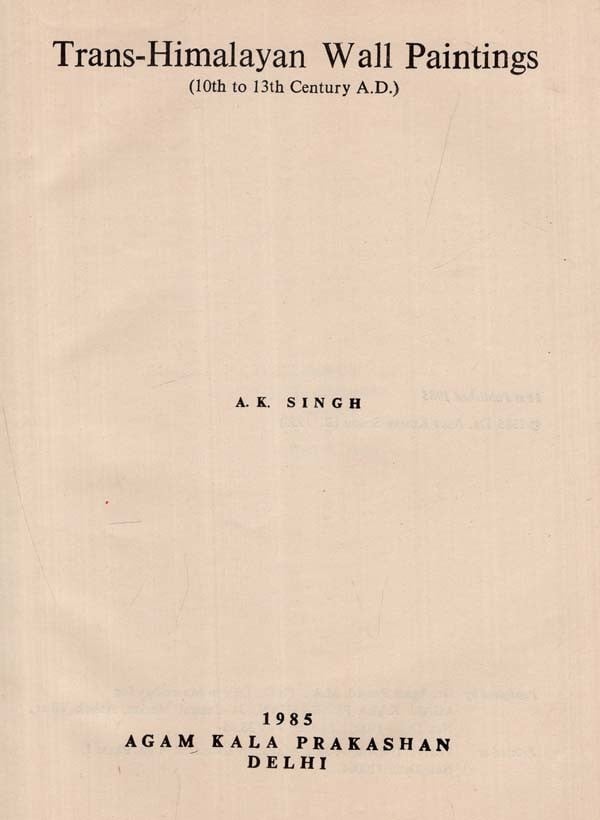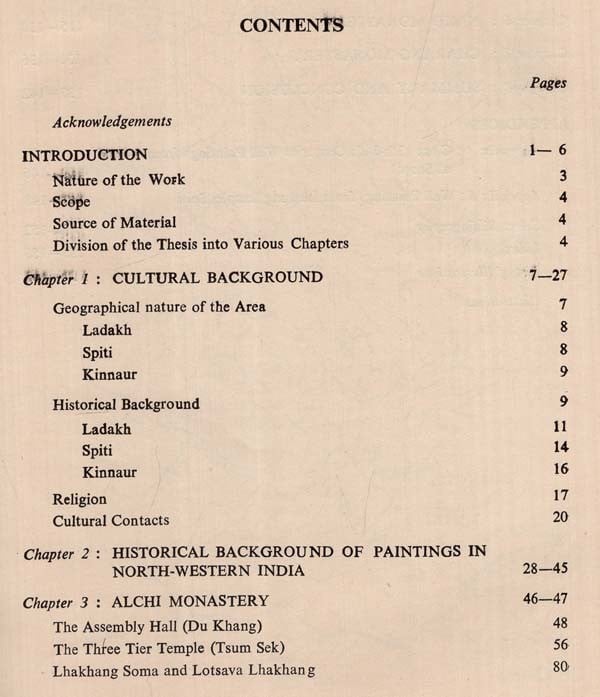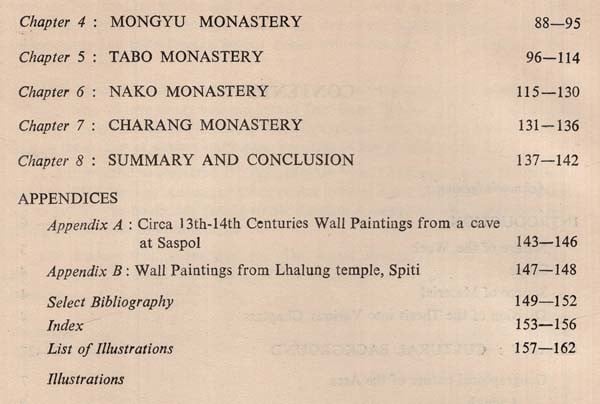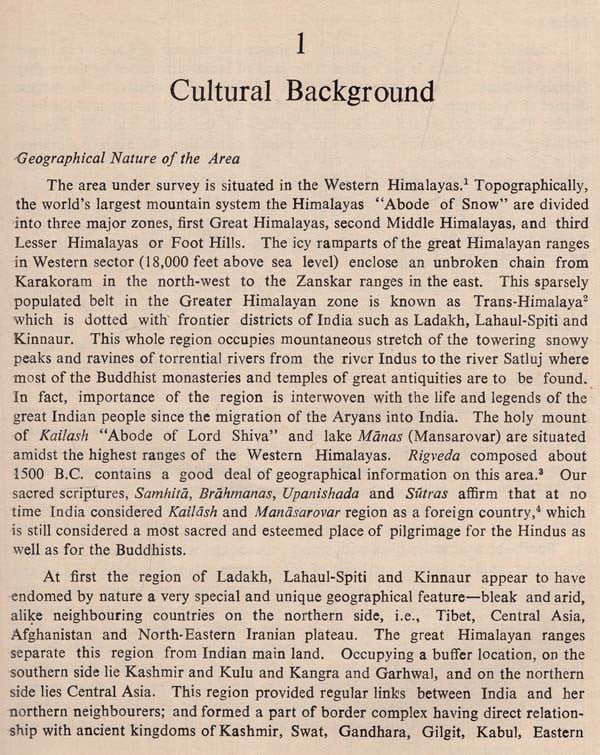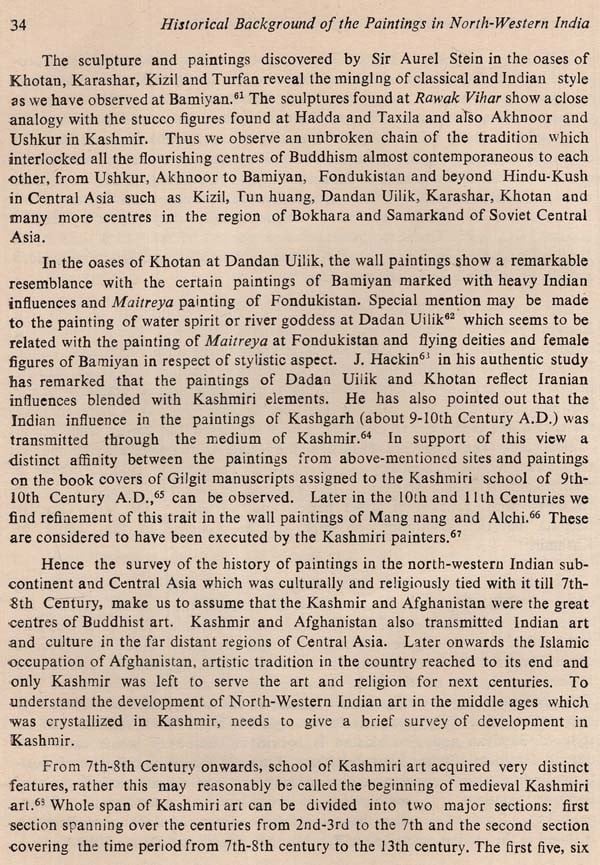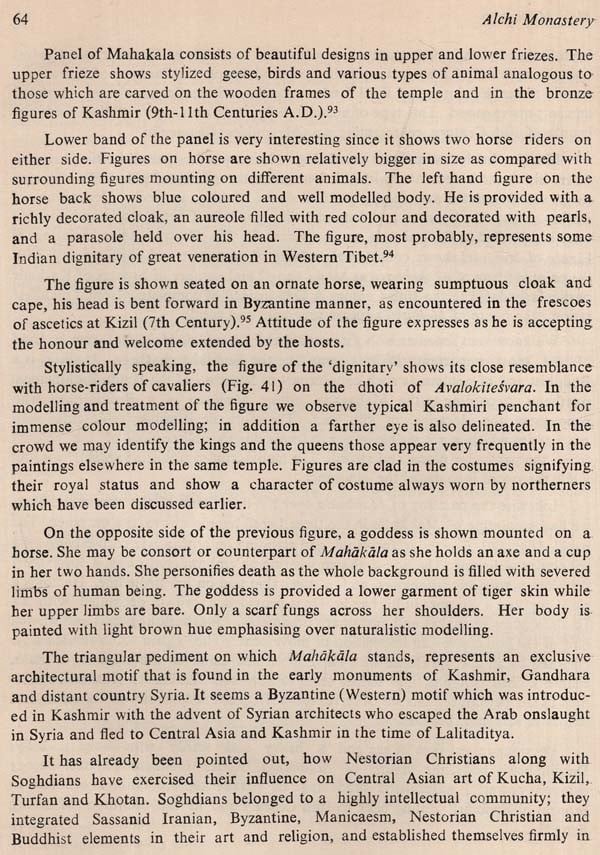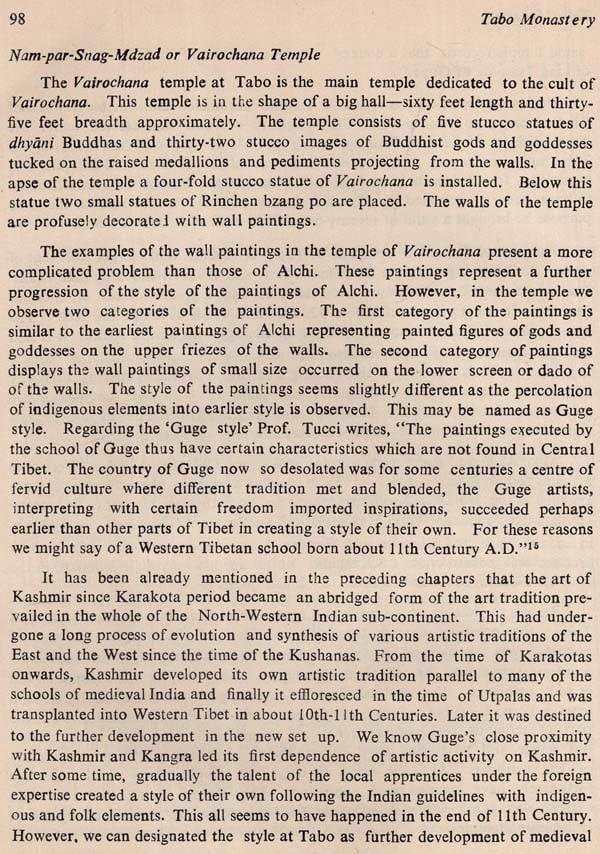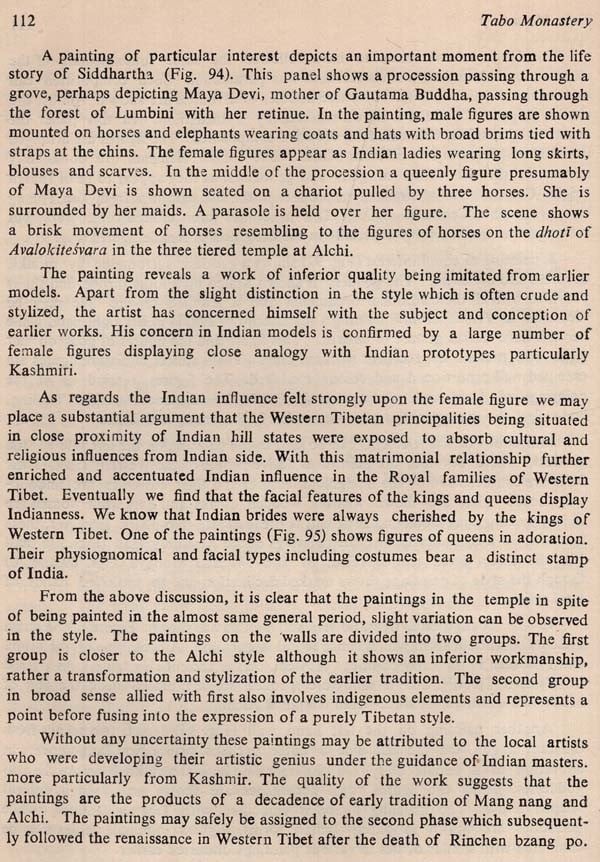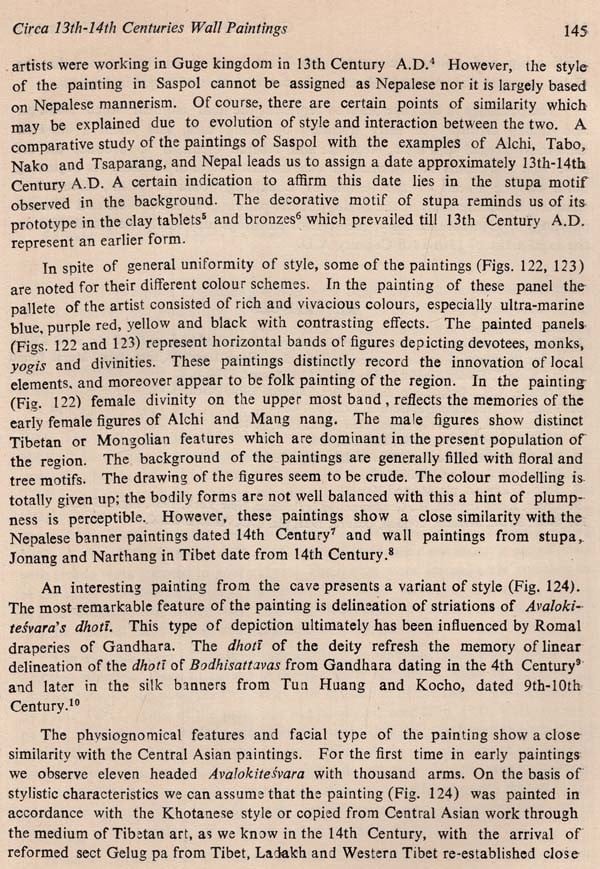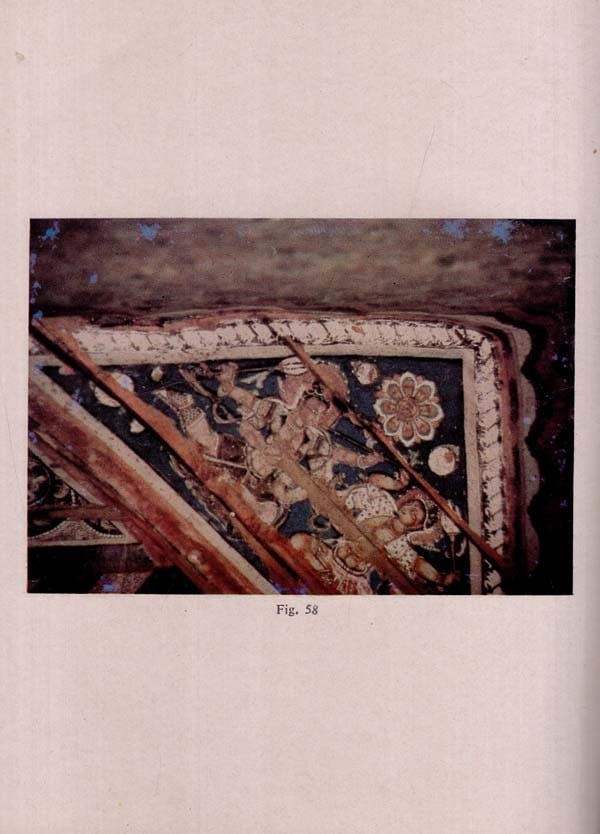
Trans-Himalayan Wall Paintings- 10th to 13th Century A.D. (An Old and Rare Book)
Book Specification
| Item Code: | UAS369 |
| Author: | Ajay Kumar Singh |
| Publisher: | Agam Kala Prakashan, Delhi |
| Language: | English |
| Edition: | 1985 |
| Pages: | 216 (With B/W and Color Illustrations) |
| Cover: | HARDCOVER |
| Other Details | 9.50 X 7.50 inch |
| Weight | 600 gm |
Book Description
This book 'Trans Himalayan Wall Paintings' is the first attempt to shed light upon the most interesting and fascinating wall paintings of the early Buddhist temples in the Trans-Himalayan regions, about which very little is known so far. In recent times few western scholars came forward to throw some light upon these paintings, that too, about a particular site, namely the Alchi monastery in Ladakh. Most of the earlier works are largely devoted to religio-iconographic aspect of the paintings but this present book deals with a much wider area and enlists many important new sites hither to unpublished or inadequately published, such as Mongyu, Saspol caves, Tabo, Nako, Charang and Lhalung. The book presents a comprehensive history of the wall paintings with detailed analysis of the composite and unitary style which prevailed in the marginal societies of the northern frontier of India between 10th and 13th centuries. This has been tentatively labelled as the Kashmir school of Painting. While the author has broadly brought out the salient features of the religio-iconographic com plexities, he has laid emphasis on the aesthetic characteristics of the paintings through their developmental processes in point of style and theme. The author seeks to present an expose of the mysteries of Buddhist paintings in Indian Trans-Himalayas in a new perspective for the first time.
Dr. A. K. Singh obtained his M.A. and Ph.D. degrees in History of Art from the Banaras Hindu University. Since 1976 he has been engaged in carrying out researches on the art of Trans-Himalayan regions with the Bharat Kala Bhavan, the art and archaeology museum of the B.H.U., as his base. Initialy he was awarded a Senior Research Fellowship by the U.G.C. to work on the subject. Later the U.G.C. offered him a Research Associateship to work upon a postdoctoral project entitled 'Ancient Arts of Central Asia and Kashmir-A study of Interaction.' Dr. Singh has undertaken extremely adventurous and painstaking journeys to explore the historical and archaeological potentialities of these difficult terrains. His efforts have led to the discoveries of some new sites in the Ladakh, Spiti and Kinnaur areas of the Trans Himalayan regions. He has published his findings in about a dozen research papers and this book is the culmination of his painstaking researches in the field of his choice.
He is presently a Lecturer in History of Art in the Faculty of Visual Arts at the B.H.U., Varanasi.
The wall paintings in the western-region of Trans-Himalaya have a fascinating history of its own, and perhaps the most exciting development in the art of North Western India, which has been forgotten with the passage of time. But there are I centuries old monasteries in the desolated vales of the innermost Himalayas which hitherto have concealed an epoch of painting from the 10th Century A.D. to the 13th Century A.D. On this basis a story of the origin and development of the wall paintings in the "land of snow" can be constructed.
The present study is confined to incorporate mainly the wall paintings of early period from 10th-11th Century to 13th Century A.D. in the Buddhist monasteries of the Western Trans-Himalaya, namely, the frontier regions of Ladakh, Spiti and Kinnaur which once formed Western Tibetan Empire. In the 10th Century A.D., with the rise of Western Tibetan Empire a great revival of Buddhism began under the enthusiastic patronage of the Kings of Guge. One of the kings of Guge Ye-she od (1000 A.D.) felt the need of reforming the prevalent form of religion which was in a degenerating state. For this purpose he selected a group of twenty-one intelligent boys of his country and sent them to Kashmir for their education in the Buddhist theology and Sanskrit. Only three of them returned to their country after their education, rest died due to rigours of unfavourable climatic condition of lower altitude of Kashmir. Among the survivors, Rinchen bzang po (958-1055 A.D.) was the great translator, scholar and temple builder. He was the Pope of Western Tibetan Empire and spiritual adviser to the King Ye she od of Guge. With him a great movement of building of temples, libraries and monasteries started. He equally encouraged arts and crafts. According to his biographers, erection of one hundred eight temples is attributed to him."
**Contents and Sample Pages**
